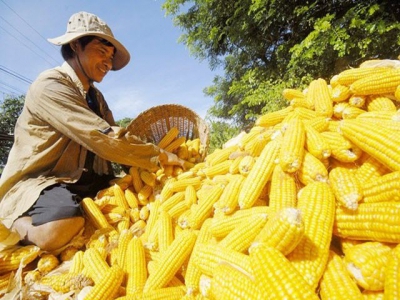Hi-tech agricultural methods

High technologies can help improve productivity, but many farmers cannot afford the investment.
Vo Ngoc Diep, chair of a dragonfruit production cooperative in Tien Giang province, began to use a solar powered drip irrigation system funded by Mono Energy from Australia 10 years ago. Diep said the volume of water needed is half of that with normal irrigation methods.
The amount of fertilizer he uses is 30 percent less now because he can mix fertilizer with irrigation water, which helps plants absorb nutrients and prevents evaporation.
Thanks to the farming method, the yield is 30 percent higher than traditional production methods. Diep estimates that he can save millions of dong in electricity because his pumps use solar power. He also does not need to hire workers.
In another case, Rynan Technologies Vietnam is using a model to produce rice using high technologies in Dong Thap and some other Mekong Delta provinces.
CEO Nguyen Thanh My said the company has been developing apps for rice cultivation. My fertilizes only once during one crop and the amount is 50 percent of traditional methods. The volume of water is 30 percent lower and plant protection chemicals 50 percent lower. The labor costs and greenhouse gas emissions are also lower.
The amount of fertilizer he uses is 30 percent less now because he can mix fertilizer with irrigation water, which helps plants absorb nutrients and prevents evaporation.
Bac Lieu province’s local shrimp hatchery overcame difficulties after the local authorities decided to apply an in-glasshouse shrimp farming model. The success rate of the model has been up to 80-85 percent, while the figure is just 25-30 percent for ordinary farming methods.
Ta Hoang Nhiem, representing a shrimp hatchery household, confirmed that hi-tech shrimp farming has been successful, though the yield is lower than 100 tons per hectare as committed by the Vietnam-Australia Group.
Challenges
Diep, who has succeeded with dragonfruit farming, wants to use solar power lamps but can’t afford it. “If you want to use high technologies, you have to spend big money, but many farmers’ financial capability is limited,” he said.
Phung Quoc Dien from NS BlueScope Lysaght Vietnam said that, to run a 1,000 square meter shrimp farming pond, at least VND600 million, or VND6 billion for one hectare, is needed.
This is why IoT and blockchain application in agricultural production in Vietnam remains modest, while other high technologies are used by only 10 percent of Vietnam’s agricultural production workforce, according to a report.
The director of an import/export company said he still thinks about whether to invest in agriculture. Hi-tech agricultural production requires huge capital and long-term investments, while the risks are high and polices are changeable.
Related news
 Vietnam struggles to overcome trade barriers to farm exports
Vietnam struggles to overcome trade barriers to farm exports While tariff barriers have been gradually abolished under various free trade agreements of which Vietnam is a signatory, many countries have put up technical
 Fruit, vegetable sector targets US$ 4.2 billion in export turnover in 2019
Fruit, vegetable sector targets US$ 4.2 billion in export turnover in 2019 To realize the goal, the sector will expand the fruit area to one million hectare and develop five main fruits in southern localities namely dragon fruit, mango
 Climate-smart agriculture key to the economic growth
Climate-smart agriculture key to the economic growth The adoption of climate-smart agriculture (CSA) will improve the productivity and quality of agriculture, increase farmers’ incomes